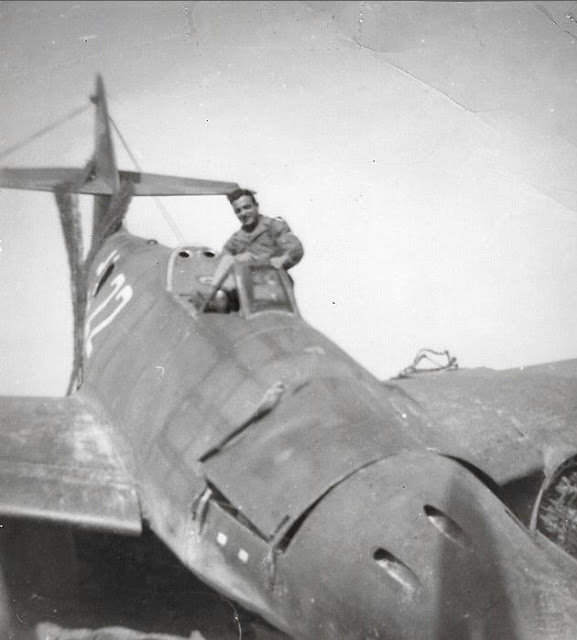One of three Lufthansa Junkers Ju 90 A-0 transports assigned to the
Fliegerführer Irak Oberst Junck and seen on Sicily against the backdrop of Mount Etna during May 1941. These machines were painted in Iraqi markings for transit via Vichy French airfields in Syria.
Sonderkommando Junck was a 120-man strong 'expeditionary force' cobbled together by the Luftwaffe to support the Iraqi insurrection of Rashid Ali against the British. Ali, a German 'puppet', was not slow in reminding his German friends of the promises of support that Hitler had made, hopeful that Ali could wage Jihad against the British and chase them out of Iraq! But with operations against Crete in full swing and Barbarossa looming large, the Luftwaffe hierarchy had little enthusiasm for mounting air operations some 2,000 kms from their prinicipal theatre HQ in Athens. However on 1 May 1941
Oberst Werner Junck -
Jagdfliegerführer 3 in Deauville, France - was summoned to Berlin and tasked with coordinating Luftwaffe air operations in Iraq. His first task was to establish an "air bridge" via Syria in support of Ali's Iraqi rebels then engaged in operations against the British, particularly the large air base at RAF Habbaniya, west of Baghdad. Junck received a
Staffel of Bf 110s (4./ZG 76), another of He 111 bombers and some twenty transports based in Mosul in northern Iraq.
Also at Catania when the pictures above were taken was a force of Vichy French aircraft in transit from North Africa to the Middle East. They were embarking on the biggest test that the so-called 'Armistice' air force would face in their short existence - defending French colonial possessions against the British and their 'Free French' allies. The Ali insurrection in Iraq, the closure of the Mosul-Haifa pipeline and German aircraft transiting via French bases led the British to mount Operation Exporter, a ground offensive against Vichy (French) territory in the Middle East.
Images currently on offer via Marco at koelsch333 Ebay sales
here
The Vichy French fighter force sent to Syria with the agreement of the Germans comprised the yellow-tailed Dewoitine D.520s of GC III/6, the aircraft transiting via Italy and Greece to arrive at Rayak, Lebanon on 27 May 1941 after a 3,800 km journey from North Africa. GC III/6 was commanded by Cdt Geille while the pilot roster included ace S/Lt Pierre Le Gloan, who had already achieved notoriety with five claims in one sortie against the Italians on 15 June 1940. He would return seven air combat victories against the Allies in Syria. The British launched Operation Exporter on 8 June 1941, the D.520 fighters of GC III/6 coming under attack from Tomahawks of No 3 Squadron RAAF. Five D.520s were damaged and one set alight in their first 'action' of this campaign.
Below; D.520 coded '33' seen in an official
Bundesarchiv PK propaganda reporter photo in North Africa prior to the unit's transfer to Syria - note the outlined fuselage
cocarde
For their journey to the Middle East the D.520s of GC III/6 were accompanied by four Potez 650 and one Farman 223 of GT II/15. The French force was held up in Athens for two days while en route to Syria due to the intense aerial activity resulting from operations against the island of Crete.
Below; Potez 650 no.15 " Adj-chef Renouard "of GT II/15 seen en route to Syria, May 1941. This particular machine was damaged in a strafing attack by Tomahawks on 26 June at Homs.
Images currently on offer
here





















































